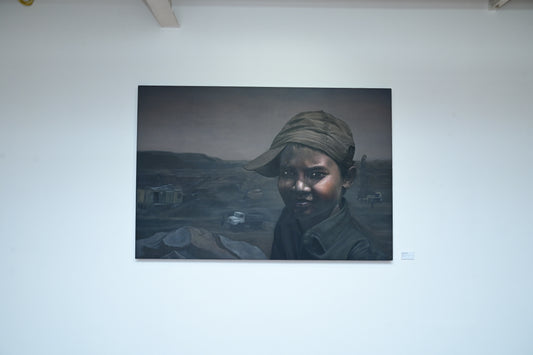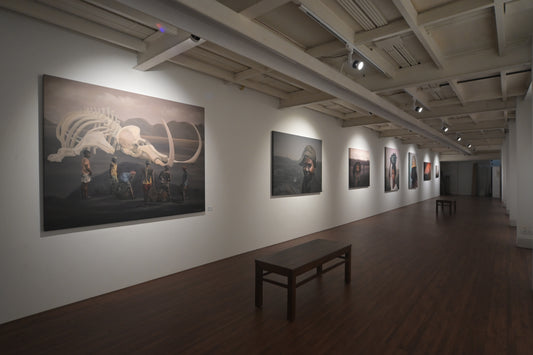Collection: Ranjeet Singh

1984
Overview
b. 1984, Bihar, India; lives and works in New Delhi
Ranjeet Singh is a multimedia artist whose practice confronts the socio-political realities of labour, displacement, and marginalisation through a deeply empathetic visual language. Working across photography and photo-realist painting, Singh documents the invisible narratives of India’s hinterlands- focusing particularly on the lives of coal miners in Jharkhand and the complex realities of workers from the Hindi Belt. His artworks serve as both testimony and resistance, challenging the systemic inequities that shape the lives of the marginalised.
Recent exhibitions include Shadow Lands (solo, APRE Art House, 2022) and Metaphors For Land (group, APRE Art House, 2024), among others. Singh’s work has been recognised for its contribution to social discourse and continues to resonate for its honesty, quiet urgency, and formal clarity.
Singh holds a Bachelor’s (2006) and a Postgraduate degree (2008) in Fine Arts (Painting) from the Faculty of Visual Arts, Banaras Hindu University, Varanasi. Grounded in a representational-figurative tradition, his work draws from personal experience, progressive literature, and mass movements, transforming visual realism into a form of political address. His paintings and photographs are not mere acts of documentation, but mnemonic devices—haunted by absence, dust, displacement, and the resilience of those living on the margins.
Through long-term engagement with the mining regions of Jharia, Singh has developed a nuanced, non-exoticized portrayal of labourers whose realities he has lived alongside. In his acclaimed Black Truth series (shown at Jehangir Art Gallery, Mumbai, 2018 and Dhoomimal Art Centre, New Delhi, 2017), Singh captures coal mine workers with startling intimacy, drawing attention to environmental degradation, systemic neglect, and the fragile dignity of those made invisible by dominant narratives.
In Singh’s words, “I choose a simply readable visual language, superimposing identical objects, contexts, and symbols to create paradoxes that vigorously convey my ideas.” His approach makes space for the viewer to encounter the unvarnished truths of the everyday—from child labour to environmental destruction—with clarity and depth. The anonymity of his subjects only heightens their universality, while his visual compositions retain a poetic, sometimes surreal, quality.
Ranjeet Singh’s art stands as a silent protest, a visual inquiry, and a call to conscience—inviting audiences to reconsider their place within the social hierarchies and environmental crises that define our time.
-
 Sold/ Unavailable
Sold/ UnavailableThe Black Truth - II
Regular price INR 500,000Regular priceUnit price / per -
 Sold/ Unavailable
Sold/ UnavailableThe Black Truth - IX
Regular price INR 560,000Regular priceUnit price / per -
 Sold/ Unavailable
Sold/ UnavailableThe Black Truth - XXIV
Regular price INR 440,000Regular priceUnit price / per -
 Sold/ Unavailable
Sold/ UnavailableThe Black Truth - XX
Regular price INR 100,000Regular priceUnit price / per -
 Sold/ Unavailable
Sold/ UnavailableThe Black Truth - VIII
Regular price INR 560,000Regular priceUnit price / per -
 Sold/ Unavailable
Sold/ UnavailableThe Black Truth - XXV
Regular price INR 400,000Regular priceUnit price / per -

 Sold/ Unavailable
Sold/ UnavailableThe Black Truth - III
Regular price INR 600,000Regular priceUnit price / per -

 Sold/ Unavailable
Sold/ UnavailableThe Black Truth- XXI
Regular price INR 700,000Regular priceUnit price / per










